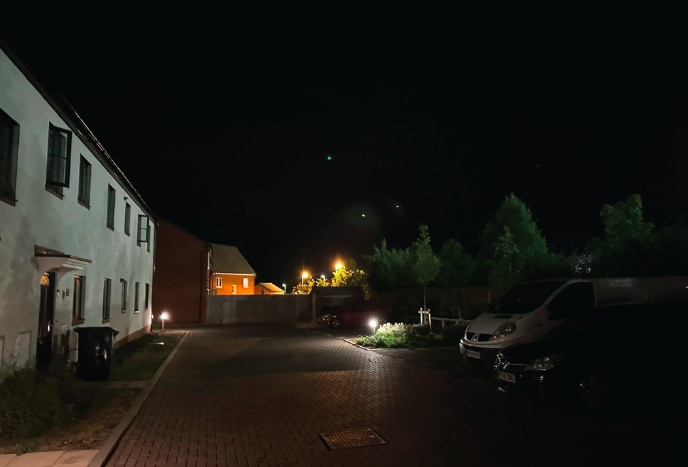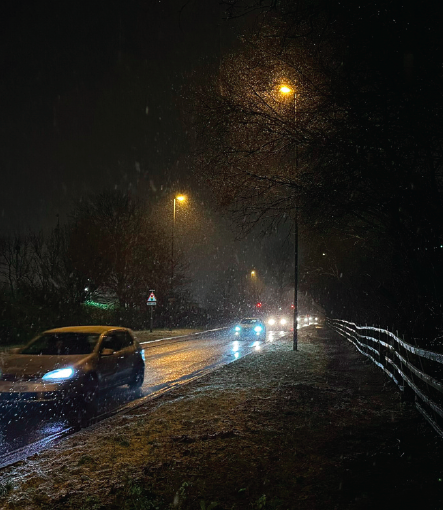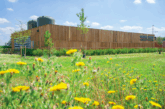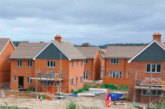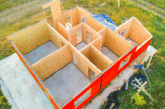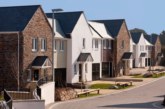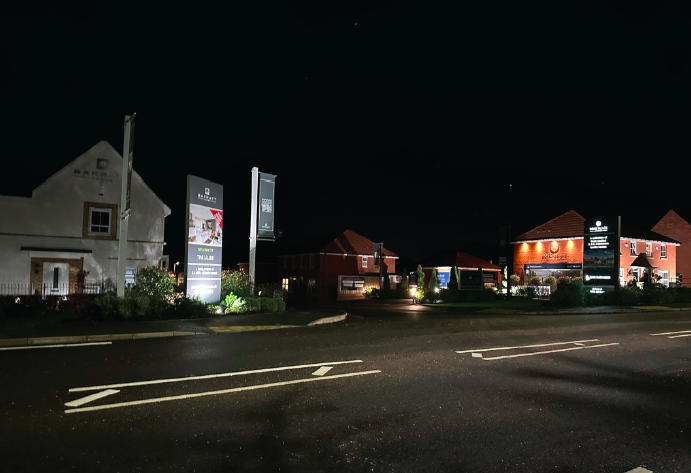
As the government continues to push housing delivery through the reclassification of green belt land, developers are increasingly working in the ‘grey belt’. But building in these ecologically sensitive, edge-zones means external lighting design is no longer just about visibility. So what do housebuilders and developers need to consider? Nathan Allen, Associate Environmental Consultant and head of the lighting team at MEC Consulting Group, shares his insight…
Typically, grey belt sites sit alongside open countryside or designated landscapes, meaning there is a high risk of encountering light-sensitive species such as bats, dormice or badgers. However, because of proximity to previously developed land, it’s easy to fall into the trap of treating grey belt schemes as purely suburban in character.
Don’t be misguided, these sites often require greater ecological scrutiny when it comes to external lighting design. So where to start? One of the first considerations is colour temperature and light intensity. Warmer-coloured lights, typically under 2,700 Kelvin, are much less disruptive to nocturnal species, mainly through the reduction in blue wave-length light. However, it’s important to note that for street lighting, local authority highways teams will often not adopt fittings with a colour temperature below 4,000K. This creates an imbalance between ecological best practice and adoptable standards, so early consideration of local highway specifications is advisable.
Although there is some guidance around assessing lighting impacts on grey belt land, much of it remains open to interpretation. In most cases, unless the site falls within a designated dark skies area, assessments typically align with Environmental Zone 2 (E2), which reflects semi-rural conditions.
However, we’ve seen cases where lighting consultants have reasonably classified a site, such as a village conversion, as E2, only for Environmental Health Officers (EHO) to argue for Environmental Zone 1 (E1), a far stricter designation typically reserved for truly rural or dark sky locations. This discrepancy can significantly affect lighting specifications, including placement, intensity, and acceptable luminaire types.
To avoid unnecessary restrictions, developers are advised to prepare a robust case for E2 or even E3 classification, in collaboration with lighting consultants and ecologists. Getting this balance right early is crucial to navigating the overlap between technical viability and ecological sensitivity.
New trends
As more developments are brought forward under the updated NPPF, we’re finding planners are paying closer attention to cumulative lighting impacts, particularly in fringe and transition zones. One noticeable shift is the rise of planning conditions related to private external lighting. Decorative up/down lighters, garage-mounted floodlights, and internal light spill are now common planning considerations, especially near foraging routes for species like greater horseshoe bats. This means lighting assessments must look beyond highways and adopt a 360-degree approach to luminance.
Smart lighting management is another evolving area. Where possible, the use of timers or dimmable PIR sensors, rather than standard on/off triggers, helps reduce ecological disturbance. Some technologies allow the output and colour temperature to change throughout the night as different uses come into play. A gradual increase in brightness is far less likely to unsettle wildlife or nearby residents than a sudden increase in light. This is particularly important on commercial or mixed-use developments, where lighting levels tend to be higher.
Finally, the use of solar lighting is increasing in popularity, especially to illuminate cycleways and footpaths. While it offers sustainable appeal, it’s not without limitation. Most local authorities won’t adopt solar units, as performance can drop significantly in winter due to poor battery storage and limited daylight hours to charge said battery, particularly in shaded or north-facing areas. Therefore, column placement, solar exposure, and seasonal use need to be carefully factored into any specification.
Lighting vs landscaping
Rather than viewing lighting and landscaping independently, these two should be designed in tandem, particularly for grey belt development. Trees and planting schemes can conflict with lighting columns as they mature, perhaps blocking light or increasing shadowing in unintended ways. Likewise, underground cabling routes need to respect root protection zones. Considering both elements together from the start can help avoid expensive and time-consuming redesigns. The same early engagement is advised for adoptable highways under section 38 or Section 278. Councils often have strict specifications for luminaire type, column height, spacing, and colour temperature, which may not align with what ecologists or EHOs are recommending.
Developers who consider lighting design early in a development’s lifespan are far better placed to reconcile any imbalances, reduce planning objections, meet biodiversity requirements, and avoid costly redesigns or delays. Ultimately, well-designed external lighting should enhance safety, security, and the habitats of wildlife and humans alike.
Nathan Allen is an affiliate member of the Institute of Lighting Professionals. Nathan supports housebuilders and developers with lighting assessments for planning applications, detailed lighting designs from Section 38 and 278 designs, discharge conditions, production of ecologically sensitive lighting strategies, and appeal support.
For more information on MEC Consulting Group visit www.rdr.link/dbf026


